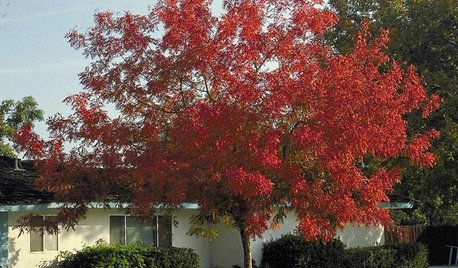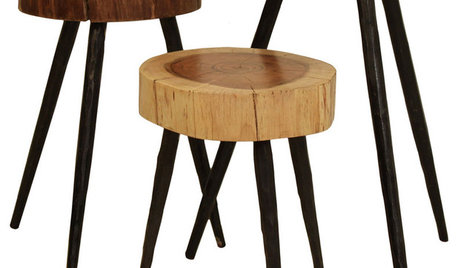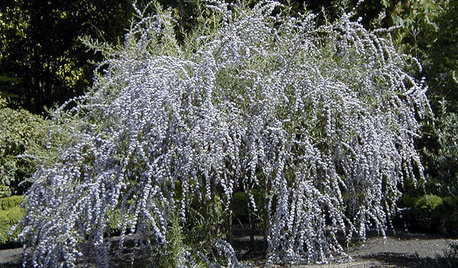Chinese Elm and suckering
alexis717_df
15 years ago
Related Stories

RED FOLIAGEGreat Design Plant: Chinese Pistache
Versatile and easygoing, this tree puts on a guaranteed fall spectacle in the landscape
Full Story
HOUZZ TOURSHouzz Tour: Up and Out Around a Heritage Tree
A Texas ranch house gets a modern makeover and a two-story addition that wraps around a protected backyard elm
Full Story
PRODUCT PICKSGuest Picks: 20 Beautiful Wooden Pieces
Elm, Walnut, Maple and Other Woods Wow in These Home Finds
Full Story
DECORATING GUIDESA Designer’s 8 Go-to Decor Pieces
Classic designs such as a Saarinen table and a Chinese garden stool will lift just about any room
Full Story
ECLECTIC HOMESHouzz Tour: Ancient and New Tell a Story in San Francisco
Chinese artifacts join 1970s art and much more in a highly personal, lovingly reincarnated 1896 home
Full Story
DECORATING GUIDESHouzz Tour: Arts and Crafts Cottage Gets a Lively Remake
An interior designer uses color, light and historical touches to brighten up a 1920s Sydney home
Full Story
PRODUCT PICKSGuest Picks: Stretch Out Summer With Outdoor Lights
Don't let shorter days spoil the party. String lights, flameless candles and lanterns can brighten patios beyond summer
Full Story
GARDENING AND LANDSCAPINGVase Shapes Set Shrubs Apart
Billowing on top and slender on the bottom, shrubs in a vase shape showcase blooms and foliage to perfection in the landscape
Full Story
FALL GARDENING6 Trees You'll Fall For
Don’t put down that spade! Autumn is the perfect time for planting these trees
Full Story
DECORATING GUIDES41 Great Gifts for Home Decor
Houzz Gift Guide 2010: Color, Fun and Style for the Rooms We Use Most
Full StoryMore Discussions









snasxs
Casia
Related Professionals
Milwaukee Landscape Architects & Landscape Designers · Panama City Landscape Architects & Landscape Designers · Redondo Beach Landscape Architects & Landscape Designers · Bridgeport Landscape Contractors · Broadlands Landscape Contractors · Choctaw Landscape Contractors · Cliffside Park Landscape Contractors · Lake Saint Louis Landscape Contractors · Live Oak Landscape Contractors · Reisterstown Landscape Contractors · Manassas Siding & Exteriors · Woodland Hills Siding & Exteriors · Clearfield Siding & Exteriors · Meridian Decks, Patios & Outdoor Enclosures · Palmetto Decks, Patios & Outdoor Enclosuressnasxs
alexis717_dfOriginal Author
snasxs
alexis717_dfOriginal Author
snasxs
alexis717_dfOriginal Author
snasxs